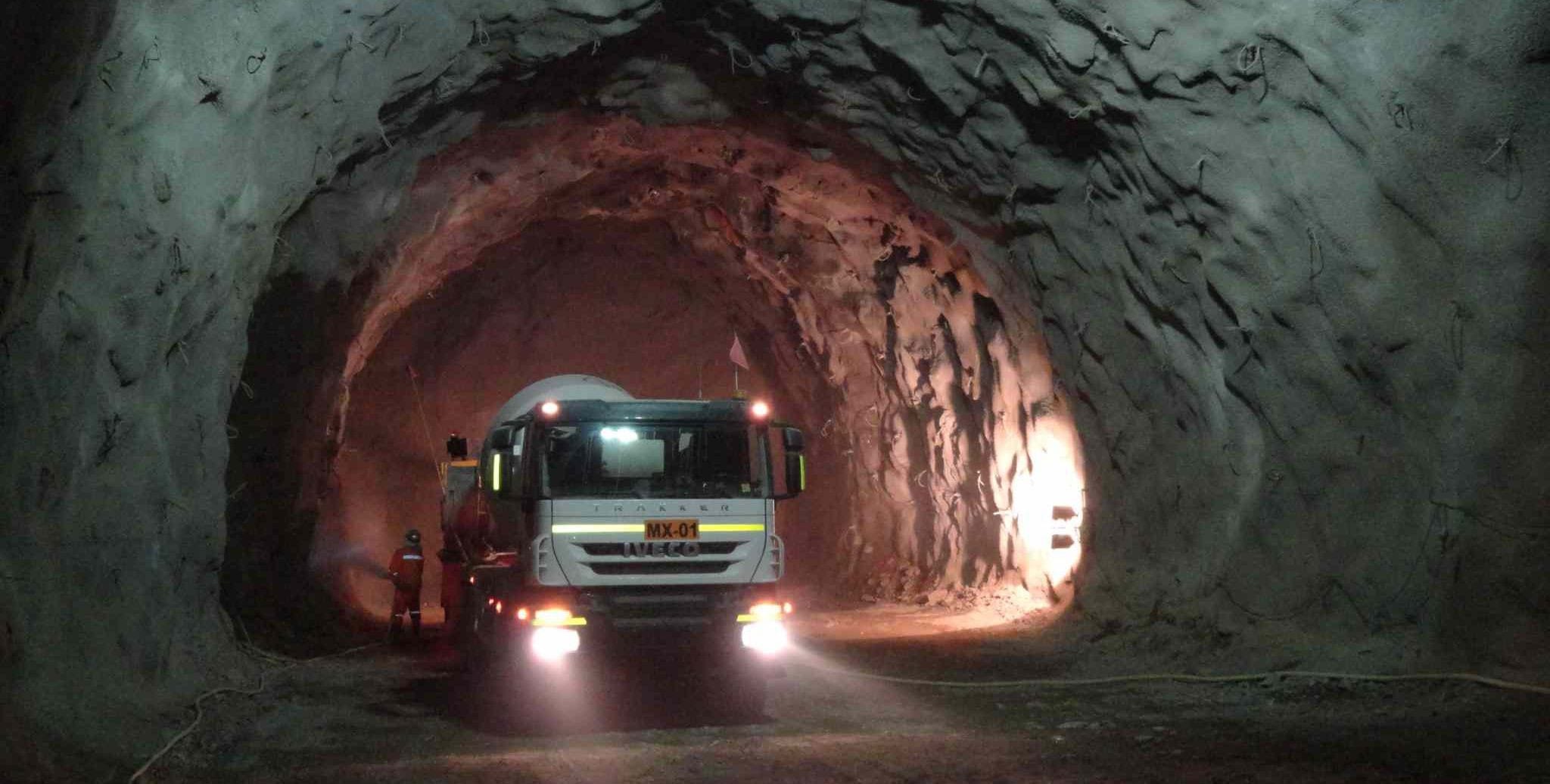The use of shotcrete to provide ground support in underground mines is a very important safety issue in the global mining sector. Research has indicated that a sizeable percentage of the injuries and fatalities that occur in underground mines are caused by falls of ground. To protect mining contractors from such hazards, especially in underground mines where the host rock is typically weak, shotcrete is used to stabilise the host rock and provide logistical support.
Shotcrete is essentially concrete that is pneumatically sprayed at high velocity on the exposed surfaces of underground openings, access ramps, caverns, and other underground infrastructure to provide ground support to mining contractors. Other types of ground support which are used in conjunction with shotcrete include bolts and mesh, along with spiling or cemented rockfill for extremely weak ground. The primary concern in using shotcrete for ground support in underground mines is its logistics. In other words, what is the best way to prepare and transport the shotcrete mix to the working front in the underground mine?
There are several options available which are primarily dependent on the characteristics of the mine (depth, extraction method, type of ore body, rock conditions, expansion, etc). The concrete plant can either be installed on the surface or underground within the mine, and the shotcrete mix can then be transported via ramps, a pipe system, or a combination of both.
Where the concrete plant is at the surface
Installing a concrete plant at the surface is convenient in that only a minor investment is involved, concrete materials supply is easy, and the plant can be moved if needed. Typically, a surface concrete plant is easier and faster than an underground concrete plant.
Transporting the mix from the surface
Where the concrete plant is at the surface, the shotcrete mix can be transported underground either via low-profile truck mixers or a pipe system.
- Low-profile truck mixers
Transport distance is the most critical component when using truck mixers. If the trucks need to cover long distances, certain additives are needed to ensure the shotcrete mix remains stabilised. Moreover, the longer the distance, the more truck mixers are needed to ensure that supply meets the shotcrete output.
The transport distance therefore has a significant impact on of the operating, maintenance, and shotcrete mix costs. In addition to this, the more truck mixers that are needed to transport the shotcrete mix, the more the evacuation of the extracted material will be hindered due to increased traffic.
- Pipe system
When the shotcrete mix is transported via a pipe system, there will be less vehicle traffic in the mine accesses and the truck mixers only need to cover short distances which reduces the operating costs.
Despite this, more investment and planning are needed with a pipe system and communication between underground and the surface needs to be excellent to maximise efficiency. Additionally, additives are required when transporting via a pipe system so the shotcrete mix does not disaggregate.
Where the concrete plant is underground
Installing a concrete plant underground is more complicated than at the surface since an underground cavern needs to be excavated to house the plant. An underground concrete plant also has a higher initial investment, however it can also be cost-efficient when the mine reaches a certain depth or extension and the transport costs from the surface simply aren’t feasible.
Transporting the shotcrete mix
Both low-profile truck mixers and a pipe system can be used to transport the shotcrete mix, similar to where the concrete plant is at the surface. The same advantages and disadvantages are generally observed when using either of these methods, including vehicle traffic for higher volumes of shotcrete mix and communication problems with the pipe system.
Conclusion
There’s no doubt that using shotcrete as a method of ground stabilisation in underground mines is an essential safety measure. Despite this, the logistics of mixing and transporting the shotcrete mix is heavily dependent on the characteristics of the mine (depth, expansion, extraction methods, etc). This is why using professional shotcrete contactors who have experience in underground mines is an integral aspect to the success of the operation.
If you have any further questions about the logistics of shotcrete for ground support in underground mines, get in contact with the professionals at Evolution Shotcrete by phoning 07 5561 8885.
